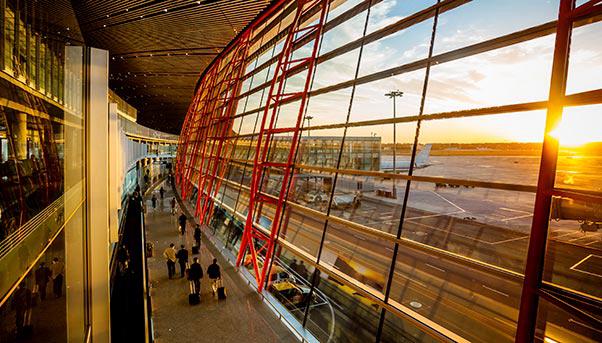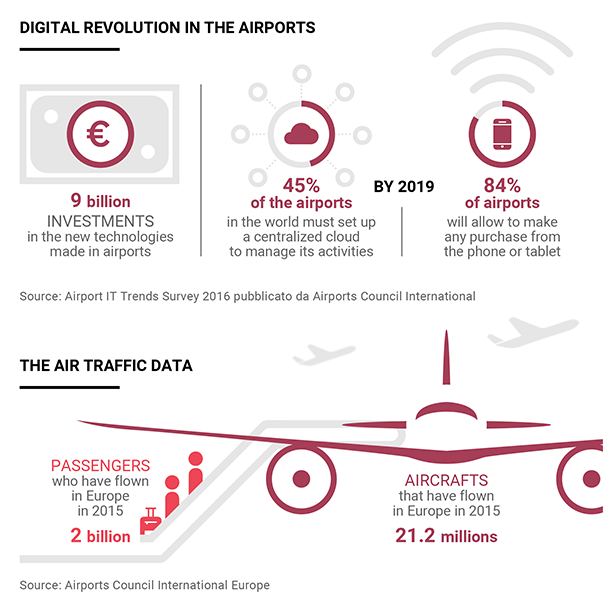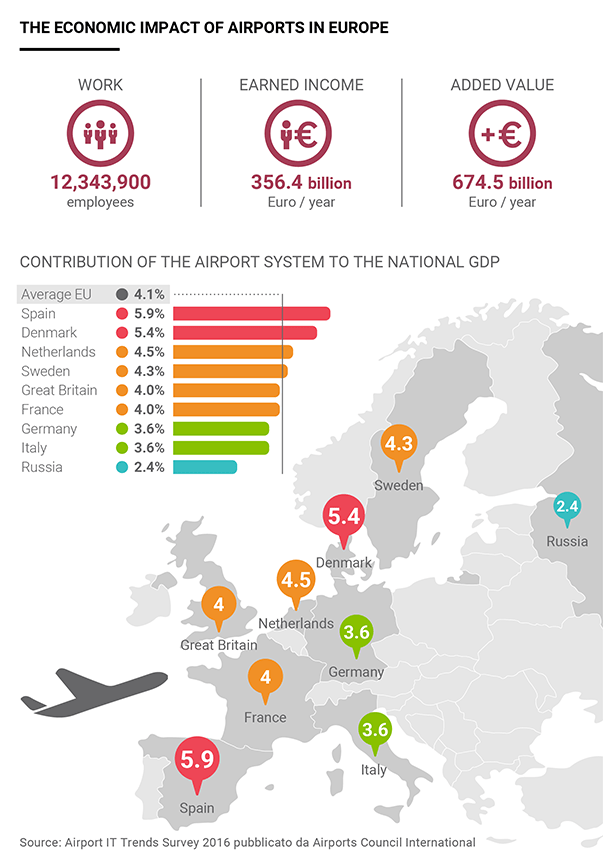
Check in, passport control, a tour of the duty free shop and a quick coffee in front of the windows near the boarding gate, watching the planes on the runway ready to take off. All this is also a way to generate wealth. There’s a close cause-effect relationship between the airport system and economic development: the more people travel, the more the economy grows. According to a study by PricewaterhouseCoopers, a 10% growth in air traffic leads to a 5% increase in foreign investment.
The Airports Council International (the organization that represents the world’s leading airports) has calculated that in 2015, global airport traffic reached a total of 7.2 billion passengers, 6.4% more than in 2014, marking the highest growth rate since 2010. And this growth is going hand-in-hand with the global economy: it is no coincidence that Asia is the region where air traffic has increased the most of all the continents, with 2.5 billion passengers, an increase of 8.6% compared to 2014.
The future is called the digital revolution
According to a report by the Airports Council International, in 2015, investments by airports in new technology exceeded 9 billion dollars and 58% of airports are increasing the budget even more for 2017. Almost six out of ten airports have invested in new digital structures for services such as check in, baggage handling, passenger transport and general assistance. With the aim of enabling passengers to carry out as many operations as possible via their mobile phones, the number of airports that will manage operations using the cloud will increase from the present 50% to 80% over the next three years.
In the forefront of this digital revolution are the Chinese airports, who are already dealing with over 4 billion flights within China.

Wealth and the economic impact
The wealth generated by airports doesn’t stop with the new technologies, but also affects more traditional sectors. The European airports system provides jobs for over 12 million people, and generates earnings of over 350 billion euros, with guaranteed added value of at least 670 billion. The impact of an airport can be measured by the allied industries in the region, as well as by indirect activities such as travel agencies and oil, catering and insurance businesses. Furthermore, airports also have an impact on the development of trade, tourism and investment.
To understand their overall effect on a region, the key word is passenger handling capacity. A study by the Aspen Institute finds that the airport system and its infrastructure represent on average almost 4% of the GDP of each country and are a key element in growth. In general, success depends on the airport’s ability to handle and connect the highest possible number of travellers and destinations. In short, it is necessary to invest in direct and indirect airport structures, including road systems.

2016 records
In terms of transit, the busiest airport is Atlanta airport in the United States, with over 100 million travellers a year, thanks mainly to its strategic position two hours flight from 80% of the US population. In terms of airport systems (totalling all the airports in a city), London is the world leader with six airports and 155 million passengers, followed by New York, which remains in second position with 123 million passengers distributed over three airports. And finally, Tokyo is in third place on the podium with 113 million passengers.
One of the most advanced airports is Changi airport in Singapore: in the last year, it registered 55 million users and in September 2016 it won the World Routes award for efficiency, not only for its internal services but also the external services, such as its connections with the city of Singapore. Changi flies to more than 300 destinations in 70 countries, and is the sixth airport in the world for number of passengers, and in the top three for freight traffic.
The smaller airports are not just standing by watching
If Changi won the award in the “over 50 million passengers” category, the smaller airports have also understood the role being played by airports and are investing in the sector: the “World Routes 2016” award for airports with over 20 million went to Dublin airport, considered the best in Europe for accessibility and handling facilities. Last year the Irish airport had over 27 million passengers with a growth rate of over 15%, the highest in Europe. It has also improved its access structures and has opened new routes, reaching 183 destinations in 40 countries.

